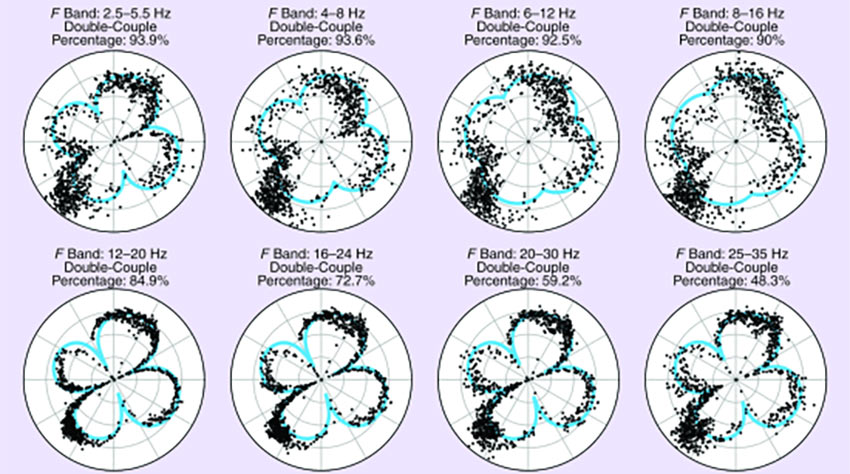
Earthquakes have afflicted people throughout history. Today, thanks to advanced technology, more is known about earthquakes, and more can be done to protect people against them. Signal processing is playing a key role as investigators examine ways to combat one of humanity’s most deadly foes.
A project at the University of Nevada at Reno is changing how researchers view potential earthquake damage. Using data collected by one of the densest seismic arrays ever deployed, researchers revealed that earthquakes emit their strongest seismic shockwaves in four opposing directions.
Daniel Trugman, an assistant professor in the university’s Nevada Seismological Laboratory, reports that the study focused on what’s called the earthquake radiation pattern, a technical term for the spatial pattern of ground motion. The effect, which creates a pattern resembling a four-leaf clover, has been widely known and observed for many years but never before measured in such precise detail (Figure 1).
It turns out that, when an earthquake occurs, the shaking amplitude is not the same in all directions. In reality, the shaking amplitude can vary systemically depending on the direction of the earthquake source to the seismometer recording it—or the person experiencing it.
Trugman, working in collaboration with Brown University geophysicist Victor Tsai, was able to access one of the densest observational arrays of research seismometers ever created. The result was the most highly detailed measurements of the spatial pattern of ground motions in different frequency bands.
The analysis was based on measurements collected by a set of two dozen small earthquakes recorded by the Large-n Seismic Survey in Oklahoma (LASSO), an array of 1,829 seismic sensors deployed for 28 days in 2016 to monitor a remote corner of the state covering 15 by 20 mi.
The array helped the researchers understand the physics behind the observed radiation pattern as well as the limitations of current physical models. “This study is definitely not the end of the story, but just a starting point for a long-term project,” Trugman says. “The idea dates all the way back to my undergraduate honors thesis at Stanford on a tangentially related topic, but started in earnest once I began a serendipitous collaboration with Victor Tsai, who was interested in the same problem.”
Trugman explains that understanding the spatial patterns of ground motion in different frequency bands is necessary to develop adequate building design codes for structures positioned near active faults. Current seismic hazard models assume a uniform ground motion prediction model—entirely ignoring the radiation pattern. The researchers are driving into the physics of the problem. Specifically, they’re looking for what might cause the observed radiation pattern to differ from classic theoretical earthquake models.

